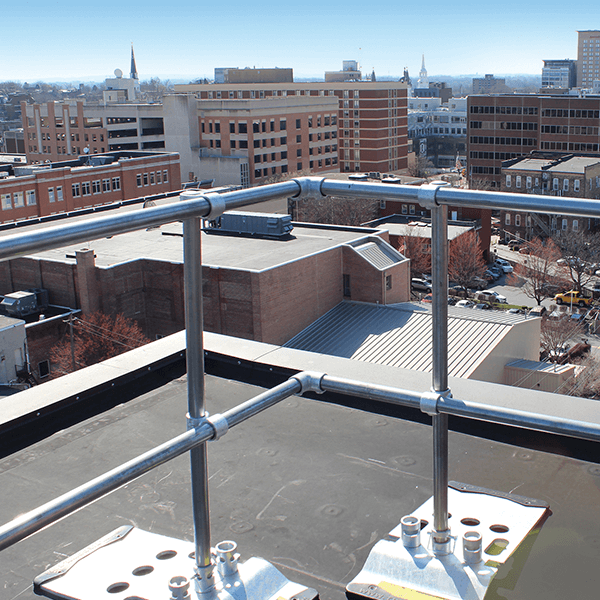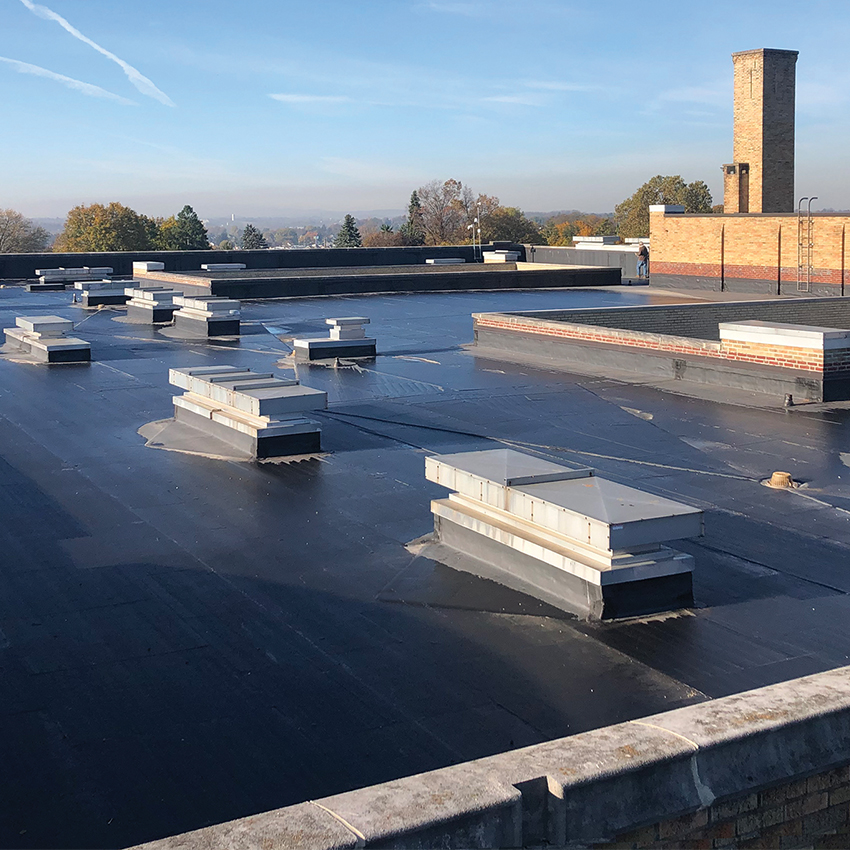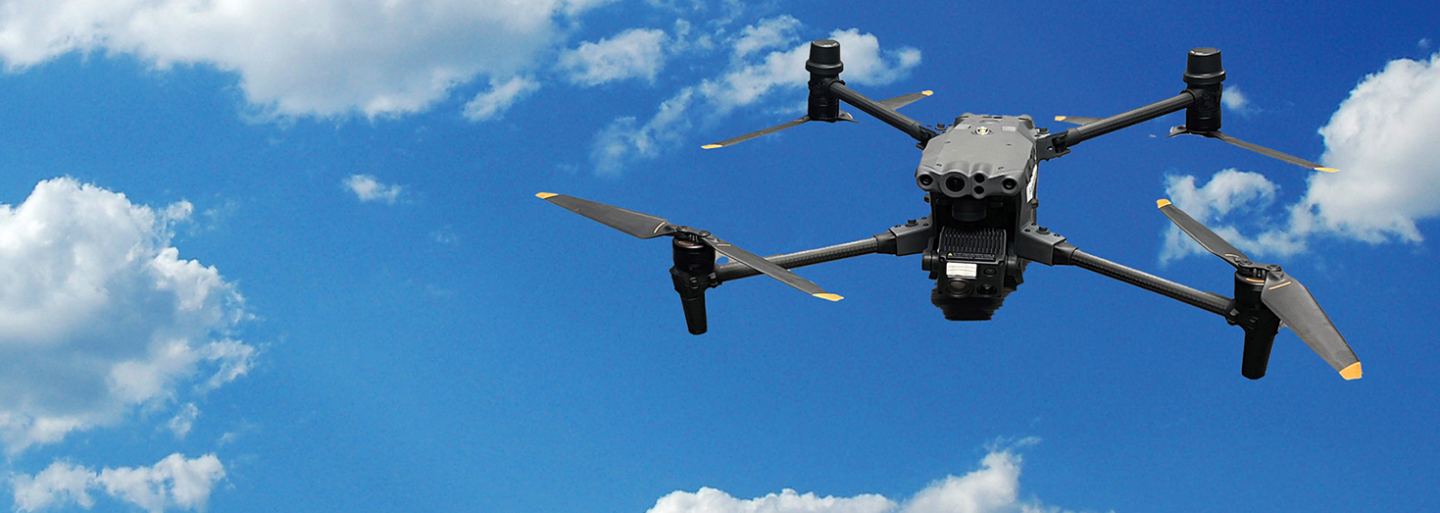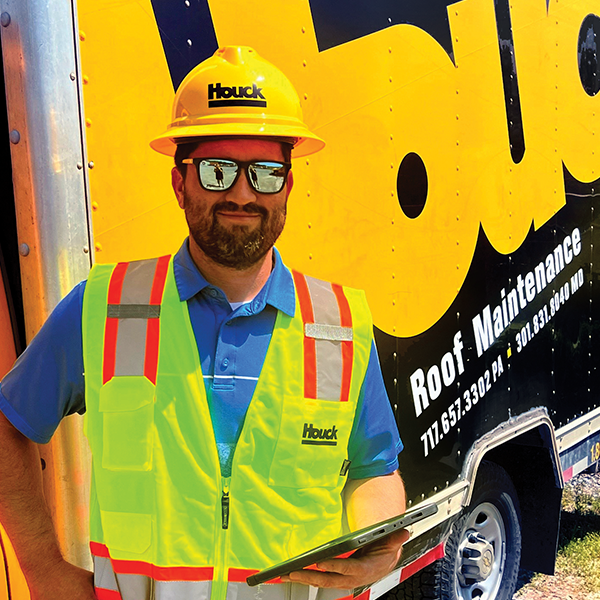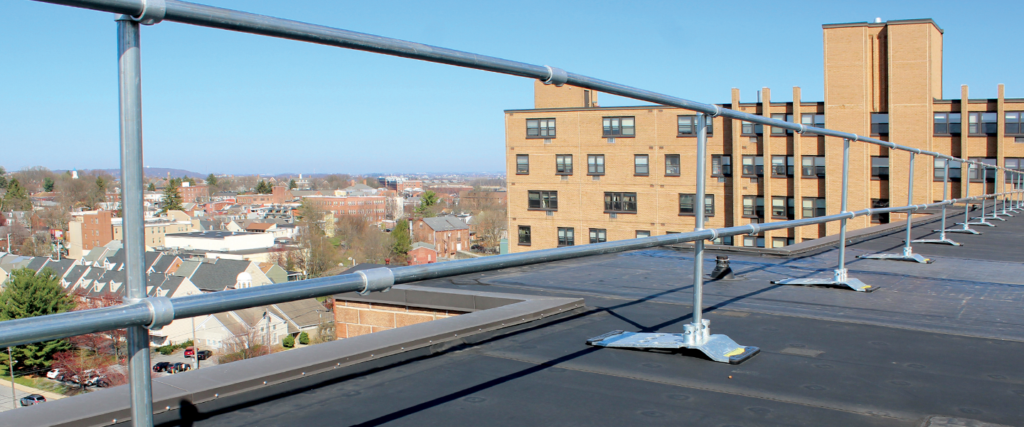
Roof
Safety System
Services
Without the proper preventative measures, rooftops can be dangerous and accidents can happen. At Houck, we understand safety. It’s integral to everything we do. We can install roof safety systems on industrial and commercial buildings to enhance safety and minimize risk.
Through our extensive training in rooftop safety, we have been recognized by numerous industry peers and organizations for our commitment to the well-being of customers and employees alike. We take pride in maintaining a safe working environment by understanding and adhering to OSHA roofing safety systems and fall protection requirements.
We specialize in the installation of roof safety systems in Dauphin County, Cumberland County, Franklin County, Lancaster County, Lebanon County, York County, and all of Central PA.
Benefits Of Our Top-Rated Roof Safety Systems.
Installing OSHA-compliant roof safety systems is beneficial for many reasons, including:
- Providing steadier footing
- Preventing falls from heights
- Closing off hazards
- Protecting the roof surface
- Safeguarding people below
Roof Safety Systems
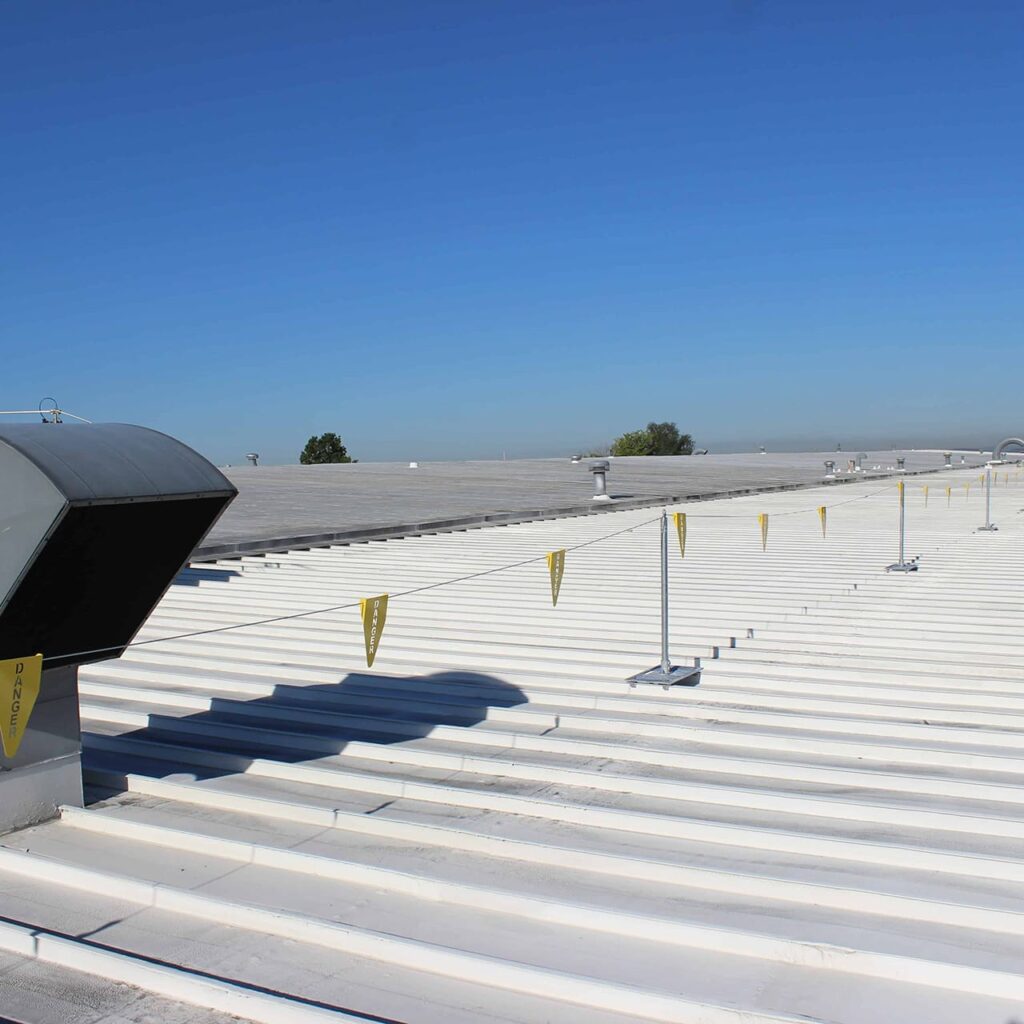
Flagging or Warning Systems
Rooftop warning lines with flags help keep workers away from dangerous edges by providing a clear visual reminder. Unlike roof safety rail systems, these lines don’t physically stop someone from going over, instead, they serve as safety zone markers.
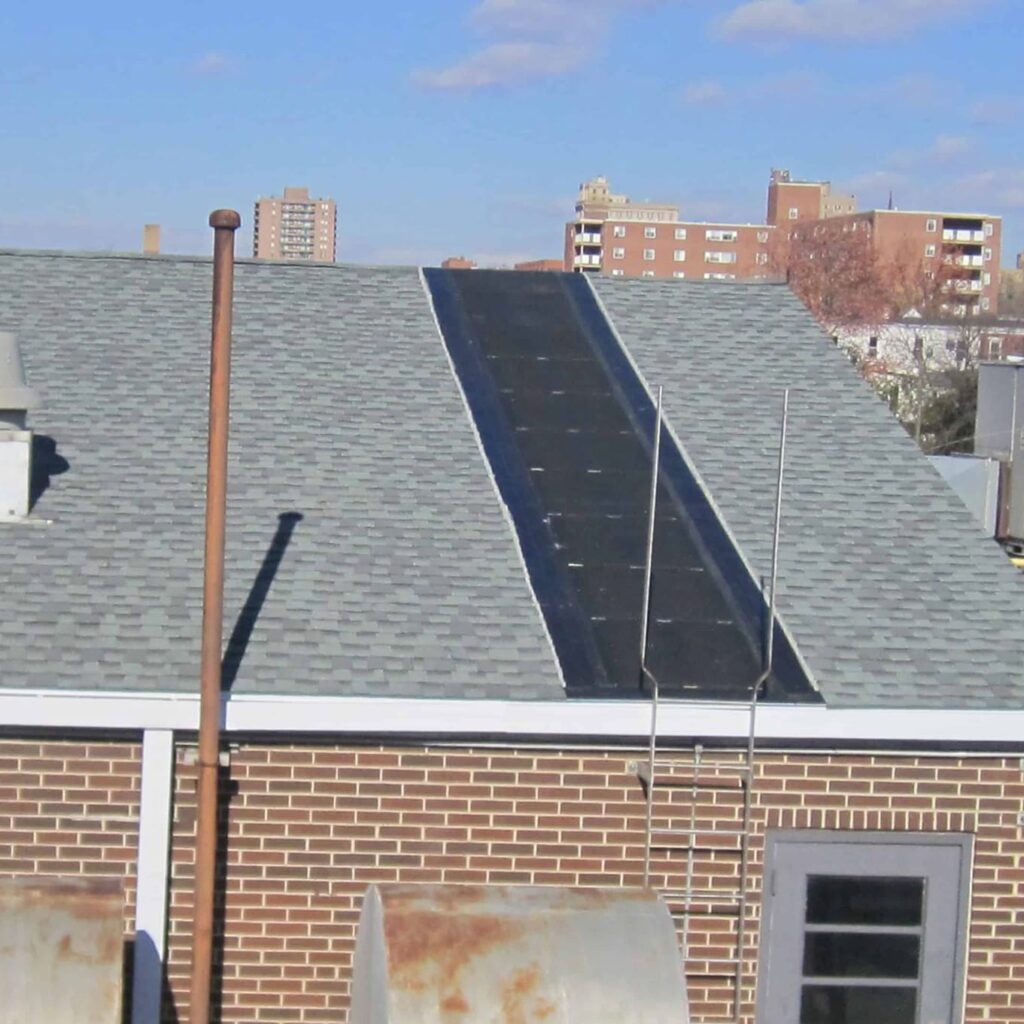
Rooftop Walkway Systems
These systems include stairs, ramps, and designated walking paths that provide safe access and navigation across the roof. Not only do they keep workers safe from falls, but they also prevent damage to the delicate roof surface by directing foot traffic to designated areas.
Rooftop Horizontal Lifelines
This roof safety harness system connects to a cable that is mechanically fastened to sections of the roof. This allows them to move freely across the roof while staying anchored to a secure line and a safe distance from the edge.
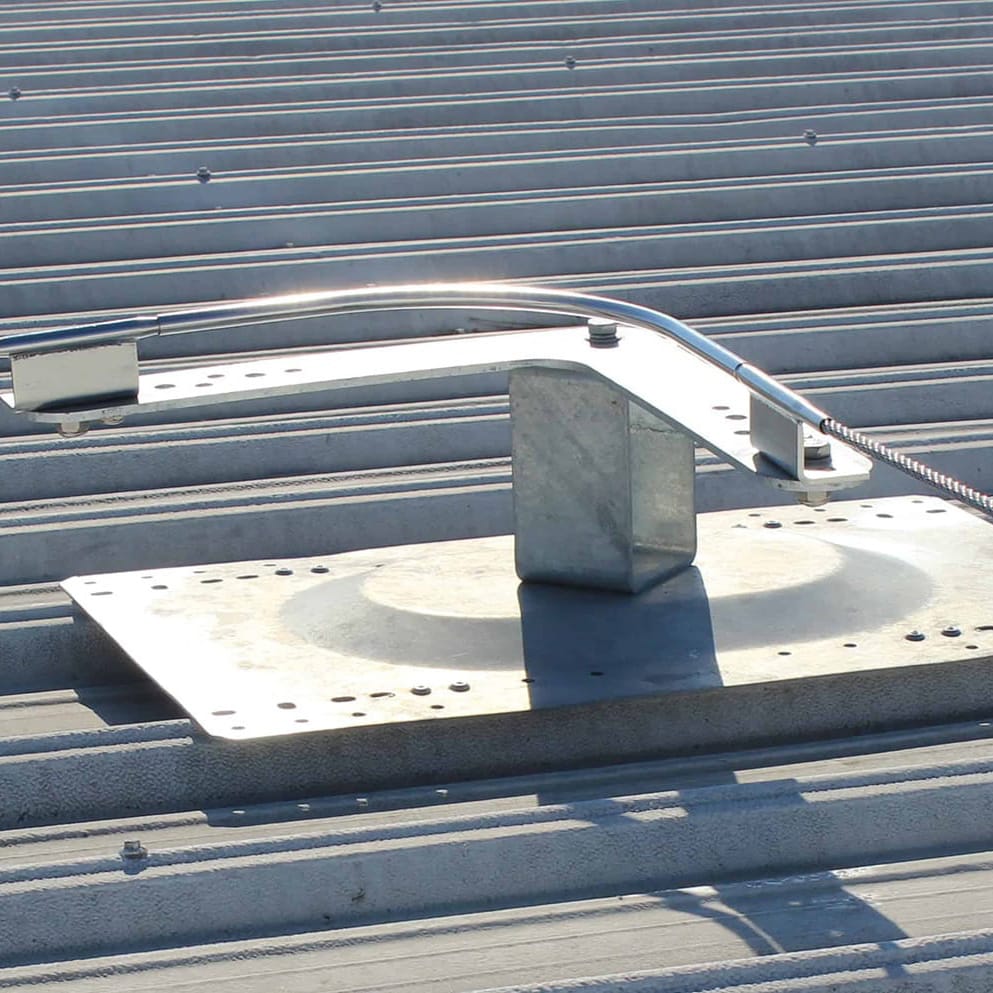
Tie-Off Anchors
Roof safety tie-off systems provide workers with harnesses that connect to a single anchor point (permanently attached to the roof) with a tether. This keeps them safe, especially when working close to the edge, but it’s only for one worker at a time.
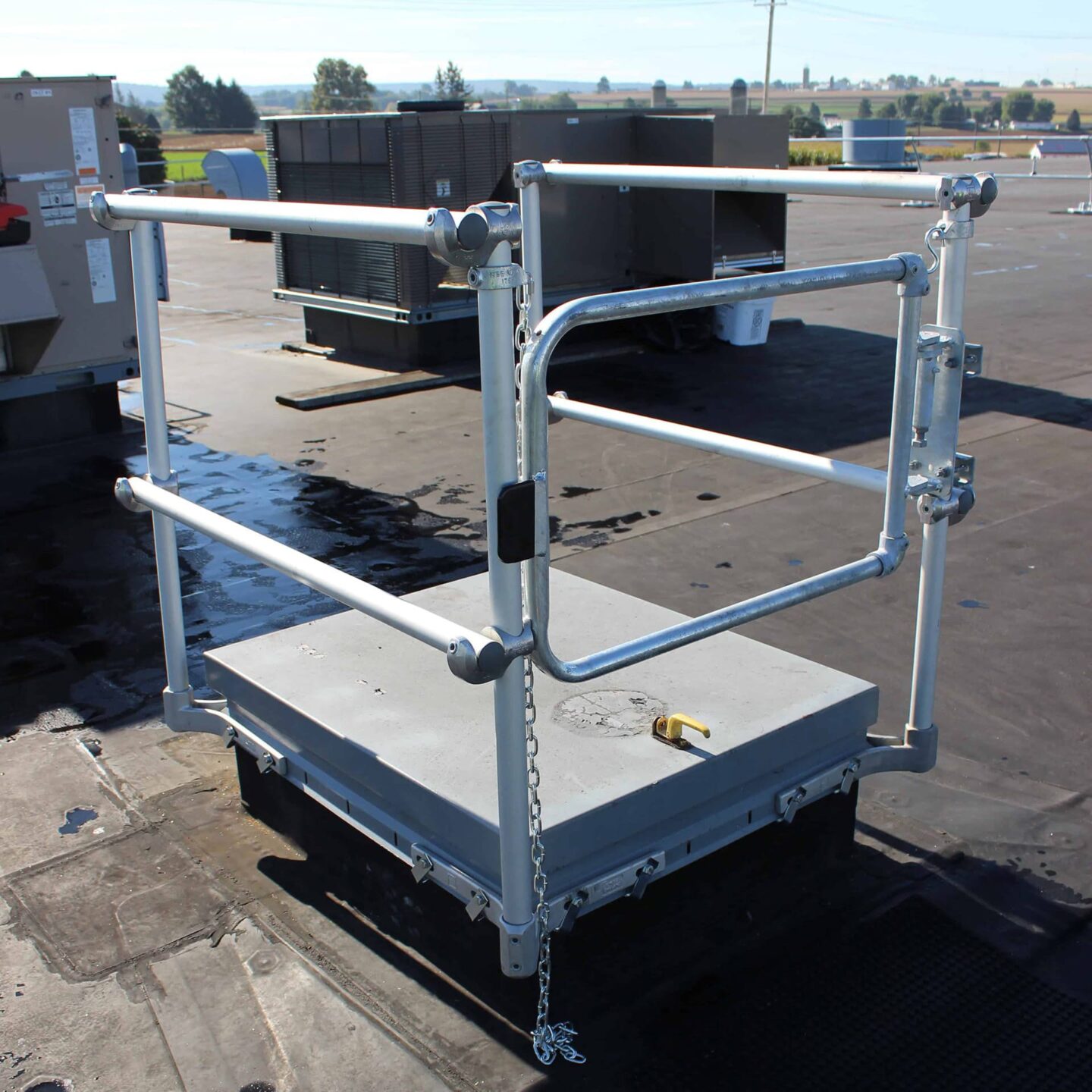
Roof Hatch Systems
These safety railing systems for roof hatches are designed to prevent workers from falling through openings. Available in a variety of styles, all roof hatch systems provide a secure barrier around the hatch, keeping workers safe.
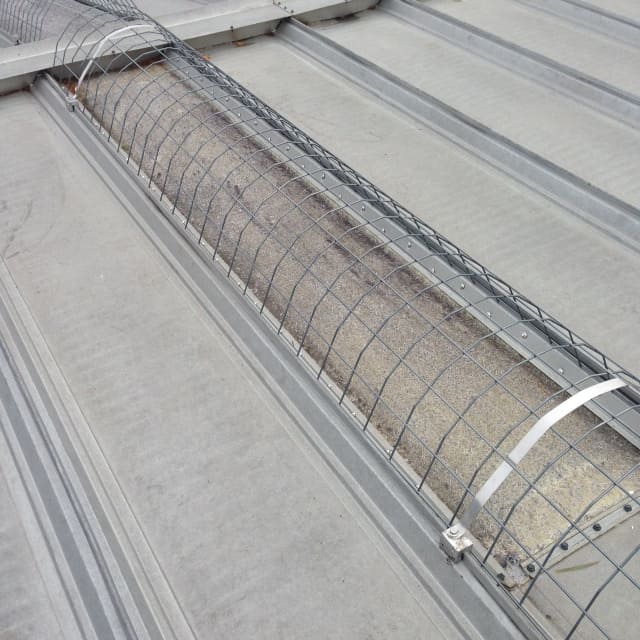
Skylight Cages or Screens
Since they aren’t designed to hold heavy loads, skylights can be hazardous. These cages and screens are installed over rooftop skylights to protect them from heavy loads as well as act as a visual reminder for anyone on the roof.
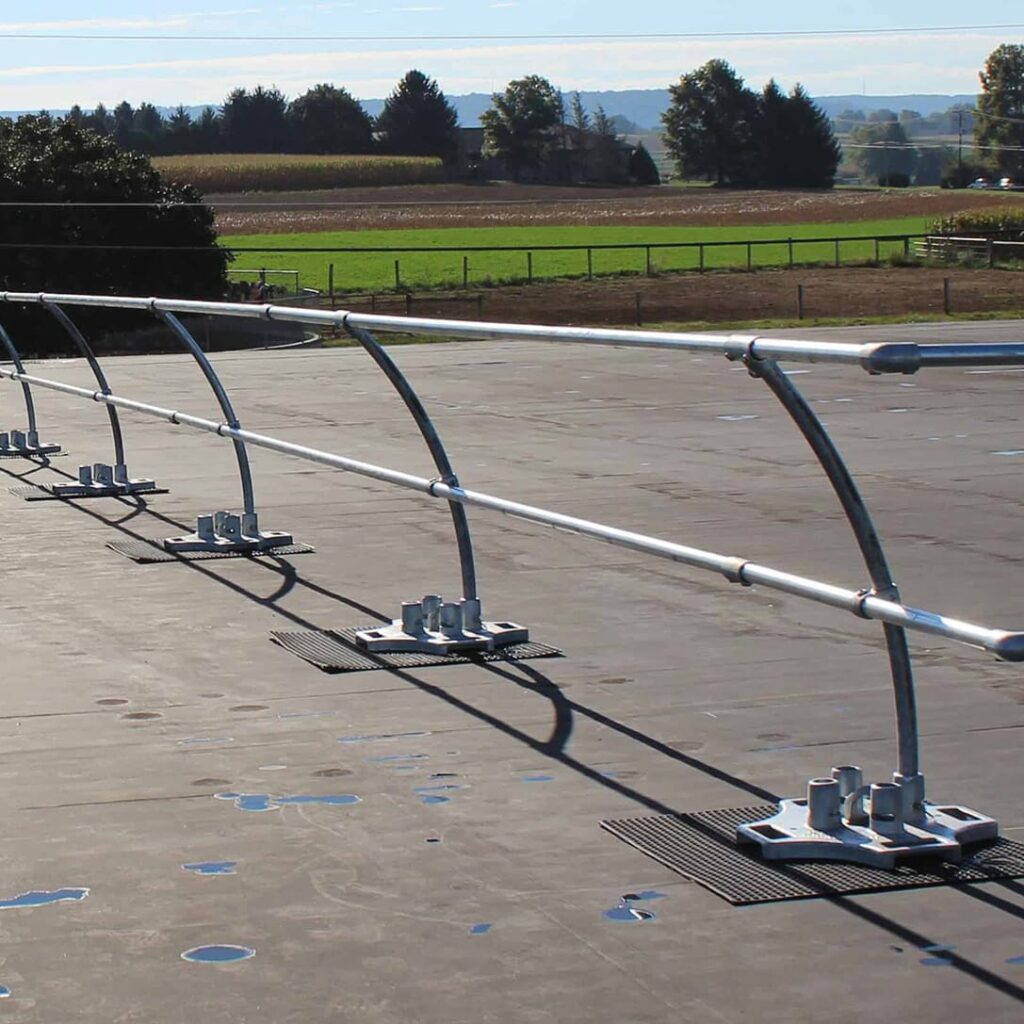
Roof Guardrails
These permanent installations can be categorized into two main types: penetrating and non-penetrating weighted systems. Penetrating guardrails are mechanically fastened directly to the roof structure, offering a durable and reliable solution. Non-penetrating weighted systems utilize weighted bases to secure the guardrails in place, eliminating the need for roof membrane penetration.
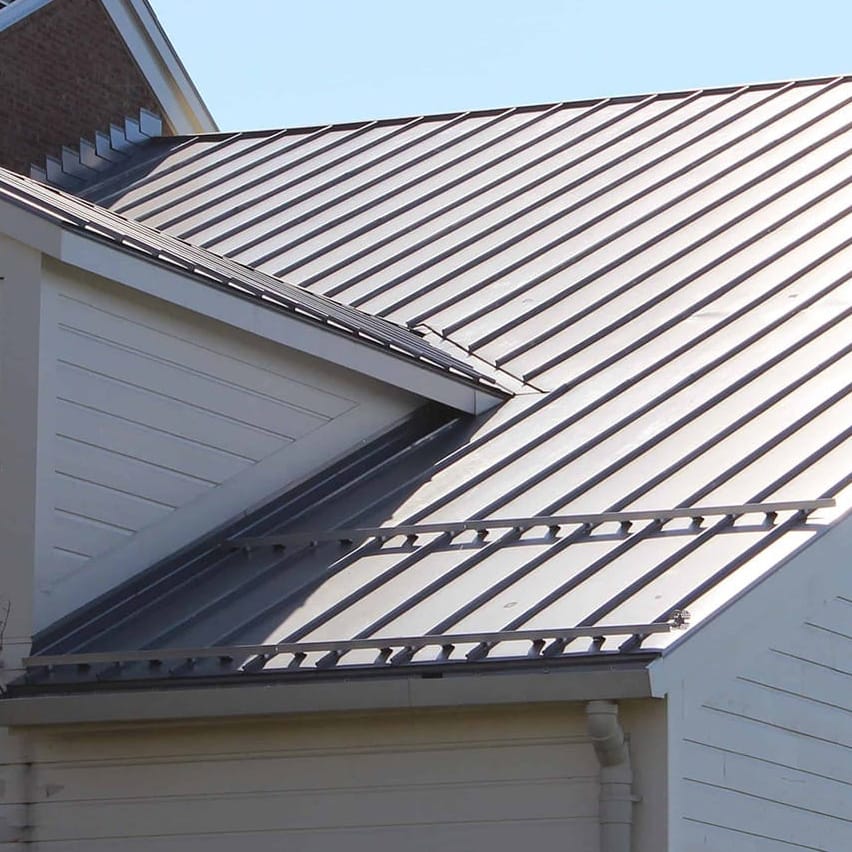
Snow Rail Systems
Also known as snow rails, these systems address snow avalanches. They are designed to mitigate the risk of uncontrolled snow and ice masses sliding off a sloped roof. This can cause property damage and serious injuries to people or equipment on the ground below. When snow and ice build up on the roof of your facility, it can cause water to back up and eventually leak into the building. With our snow and ice removal services, our team ensures build-ups like this don’t cause damage to the facility.
Let’s Build Something Great – Together.
At Houck, our teamwork ensures exceptional roof safety. Explore all the other services we offer to meet your building envelope needs.
Make Sure Your Roof Safety System Is Up to Date.
Experience the peace of mind of knowing your roof is safe for anyone on or under it. Let Houck take care of your roof safety system needs.
